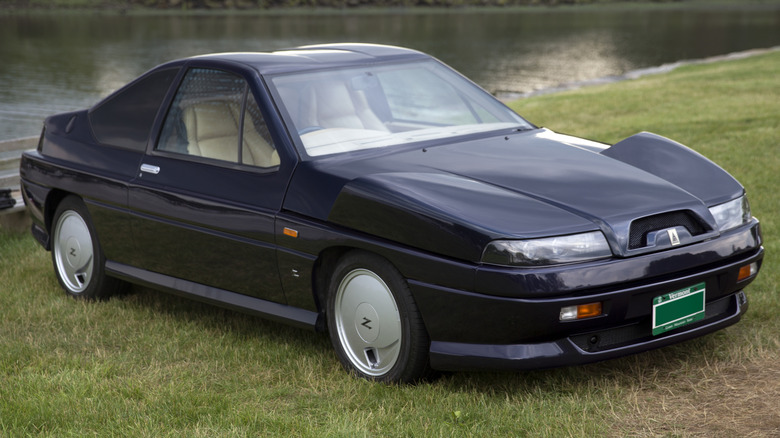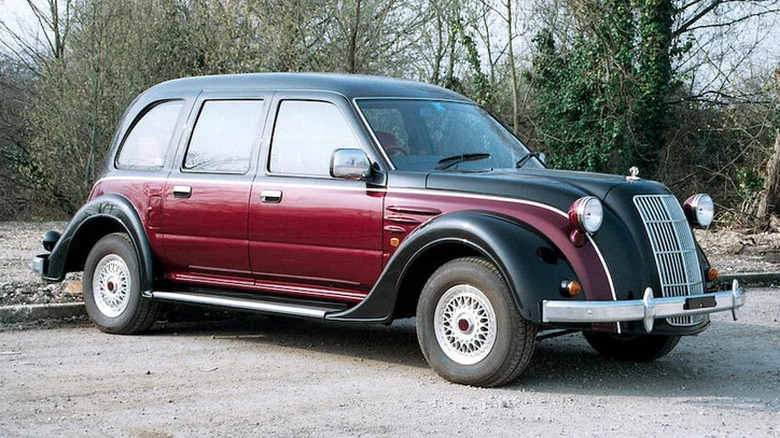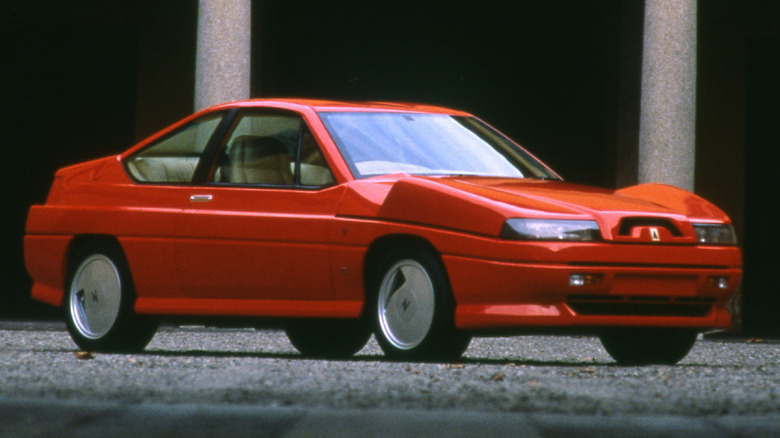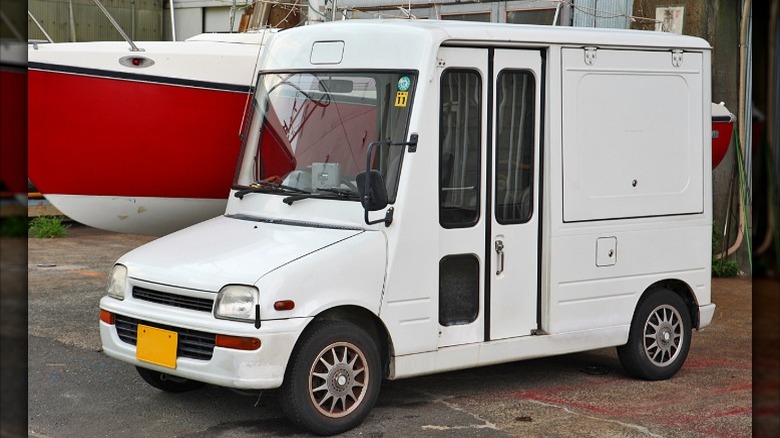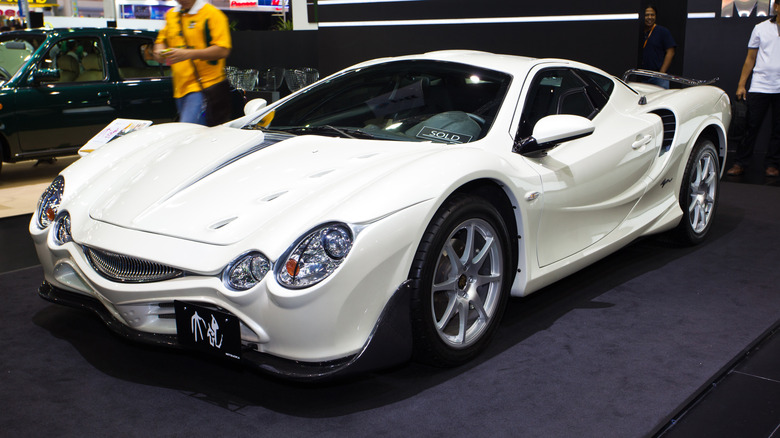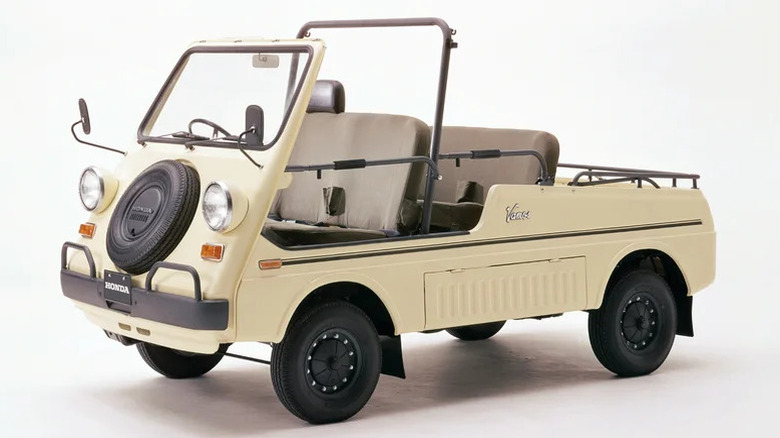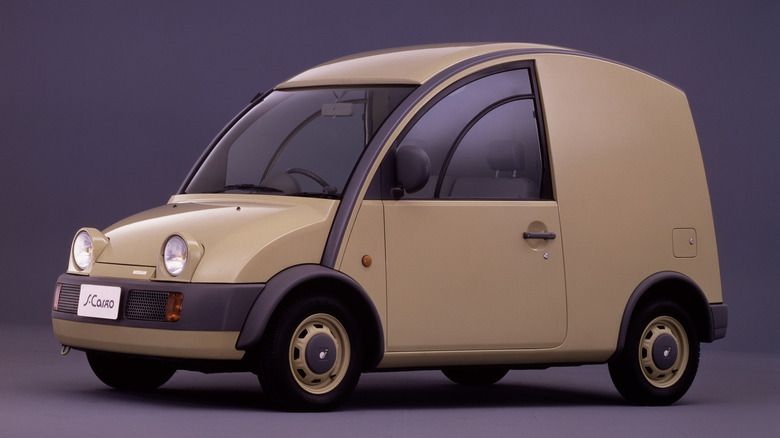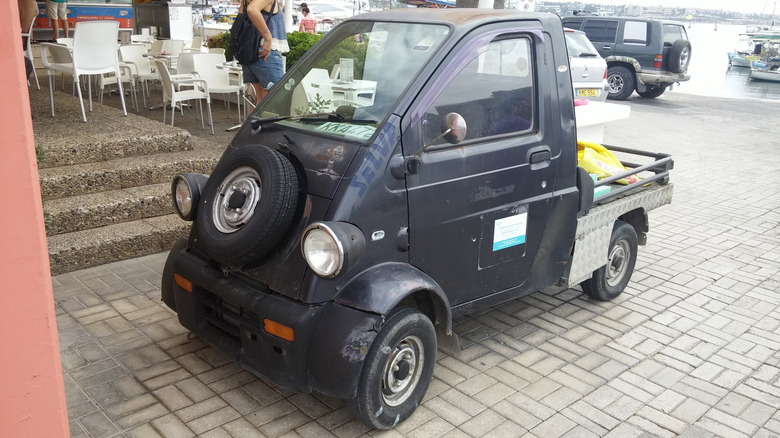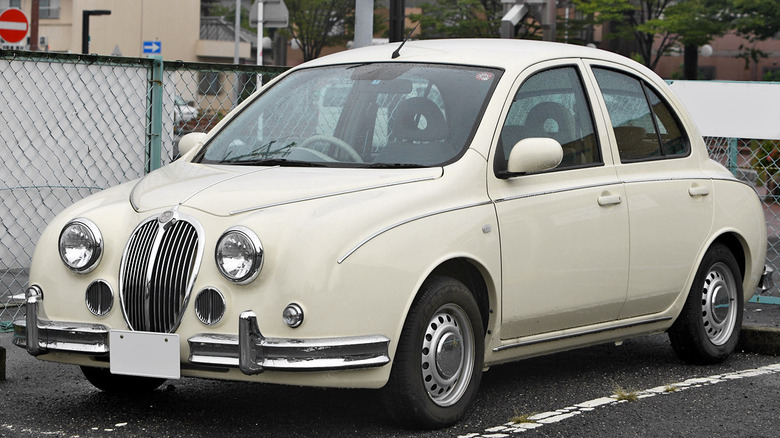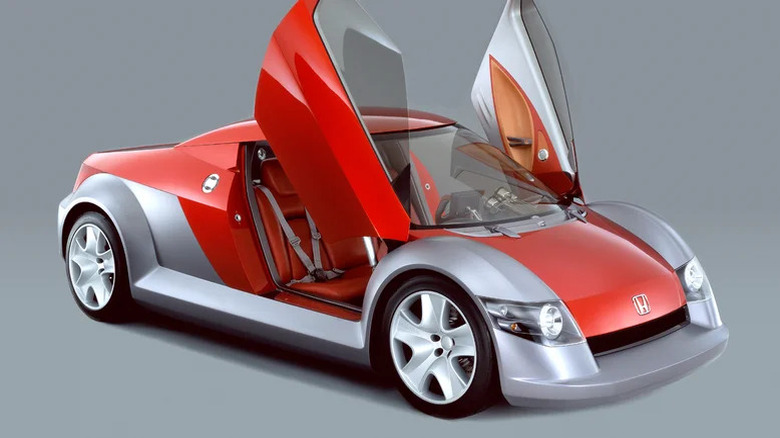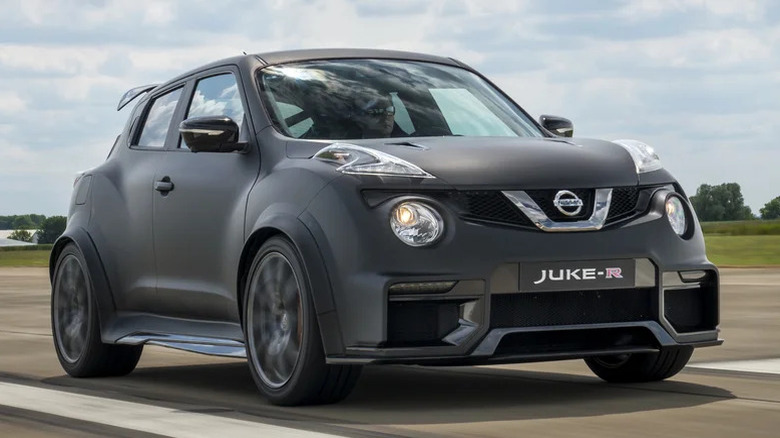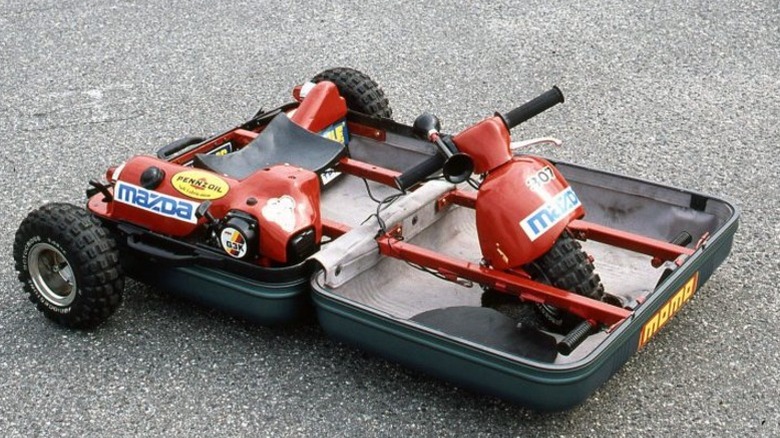12 Of The Most Unusual Japanese Vehicles Ever Made
Japanese automakers have manufactured popular cars in virtually every major market segment, from budget-friendly econoboxes to family-hauling full-size SUVs. Across the globe, models like the Honda Civic and Toyota Corolla have sold in their millions, winning over buyers thanks to their practicality, efficiency, and reliability. However, while Japanese manufacturers are globally renowned for these sensible cars, enthusiasts will also be well aware that the country has been responsible for churning out some of the most unusual vehicles to ever hit the roads.
From pint-sized pickup trucks to tire-shredding compact crossovers, Japan's knack for creating efficient oddities is unmatched. Even when its carmakers turn their focus to larger vehicles, the results can still be thoroughly weird. We've gone back through the JDM archives to select 12 of our favourite unusual Japanese vehicles from years past, many of which have become cult collectors' cars today.
Toyota Classic
While its bestselling models will be instantly recognizable to drivers worldwide, there are a few more obscure Toyota models that many people might not realize exist. The Toyota Classic is one of the automaker's weirder creations and was built as part of a series of low-volume special editions in the 1990s. The brand referred to that series as the Toyota Excellent Conversion Series, or TECS. The car's unusual design mimics Toyota's first-ever passenger car, the Model AA, which launched in Japan in 1936. Sixty years later, the Classic was unveiled, with production restricted to just 100 examples.
In order to create the Classic, Toyota needed a modern platform. Its designers tried to preserve the proportions of the '30s original as much as possible, and so they used the platform of the Hilux pickup truck as the starting point, since it was the closest match they could find to the original car's dimensions. The Classic's 2.0L four-cylinder engine was also borrowed from the Hilux.
The car's limited production run and its exclusive sale in Japan make the Classic one of the rarest Toyotas on the road today. One sold at a Bonhams auction in 2003 for around $16,000, but today these JDM oddities are far more valuable. Duncan Imports, a Virginia-based JDM specialist, has nine of the original 100 examples for sale at the time of writing, with prices ranging from $30,000 to around $50,000 for the most pristine example.
Autech Zagato Stelvio AZ-1
The Infiniti M30 is far from the most unusual Japanese car of its era. It was one of a pair of vehicles that launched the Infiniti brand in America in the late '80s, and in 1991, Nissan decided to build a convertible version. So far, so normal, but the American market missed out on the weirdest version of the car. In Japan, the M30 was sold as the Nissan Leopard, but the same car also received an Italian makeover to be sold as the $160,000 Autech Zagato Stelvio AZ-1.
This ultra-rare, ultra-divisive looking car was designed by Italian coachbuilder Zagato under the direction of Nissan. At the time of its unveiling, Nissan also owned a majority stake in Zagato, having invested in the iconic coachbuilder at the peak of Japan's Bubble Era. Despite its wild bodywork, underneath the car was essentially a modified Leopard with a borrowed V6 engine. It combined Italian style with Japanese reliability, but its extremely high price meant that only a small number of examples were sold. The exact number isn't clear, but reports pin the total production run somewhere near 100 examples.
Daihatsu Mira Walk-Through Van
Kei cars are one of Japan's best-known automotive segments. The Japanese government originally created the kei rules to provide tax breaks for buyers of small cars. To qualify for kei status, a car had to have an engine below a certain displacement. The exact number has changed over the decades, but current rules specify a maximum of 660 cc. It also had to fit within certain overall dimensions. This has led to plenty of odd-looking kei cars, but few look more comical than the Daihatsu Mira Walk-Through Van.
Multiple generations of the van were built as commercial vehicles from 1980 through the 1990s, and today they've become a cult classic among Japanese enthusiasts seeking unusual commuter vehicles. The Mira made its way over to America, with kei cars in general gaining popularity as affordable but quirky collector cars in recent years.
Mitsuoka Orochi
It's safe to say that almost any Mitsuoka car could feature in a list like this, since almost all of the automaker's creations are very unusual. However, the Orochi is a particularly head-turning car, with proportions inspired by the Honda/Acura NSX and an exterior design that's divisive to say the least. Despite its outrageous design, the Orochi isn't all that groundbreaking underneath, with its oily bits borrowed from Honda and Lexus. It's powered by a 3.3L Lexus V6 engine producing a modest 231 horsepower. That leads to a reported 0-60 mph time of seven seconds — so it would be beaten off the line by a 2025 Toyota Camry.
Despite its limited power, the car sold well in Japan, with Mitsuoka reportedly working at full capacity to produce as many examples as possible when the car launched in 2007. Since the automaker is so small and each example of the car was hand-built, its overall production numbers remained low. Originally, a run of 400 examples was planned, but it's unclear whether Mitsuoka did indeed build all 400 as intended. One of those examples was given an even more divisive makeover in 2022 at the hands of famed Japanese tuner Liberty Walk.
Yamaha OX99-11
When Japan's economic bubble burst, one of many casualties was the Yamaha OX99-11, which was first unveiled in 1992. At the time, Yamaha was an engine supplier to Formula 1, and wanted to transfer its racing efforts into making a road car. This would be no ordinary sports car either: it featured a detuned version of the brand's F1-spec OX99 V12 engine, plus a carbon fiber chassis and race-derived suspension. Drivers sat in the middle of the car, with a single passenger seat squeezed in just behind them.
The car was planned to be both groundbreaking in its construction and groundbreaking in its price, with one of the highest MSRPs of any Japanese vehicle. Buyers would have had to shell out around $1 million for the OX99-11, although it would turn out that most potential buyers would never get the chance. Yamaha built three prototype examples of the car before canceling the project as the effects of Japan's economic recession began to bite. Those three prototypes are known to survive to the present day, and one was even listed for public sale in 2020.
Honda Vamos
Although the name was later used for Honda's more conventional small vans, the original Honda Vamos was very unusual. It was launched in 1970 as a pint-sized beach buggy, although Honda also claimed it could be used for everything from factory transportation to construction sites. There were no proper doors, windows, and not even a proper roof, and drivers couldn't go anywhere fast either, as the van's 350cc engine only produced 30 horsepower.
Honda clearly thought there was a good market for the Vamos in Japan and other export markets, as its press release at launch included an estimation that the brand would sell around 2,000 examples per month. However, the actual demand for the van was far, far lower. By the time the vehicle was axed in 1973, Honda had reportedly only sold 2,530 examples. That's a little over one month's worth of its original estimated rate of production, after the van had been on sale for three entire years.
Its unusual looks, rarity, and classic status has kept it desirable among collectors in Japan. However, it's safe to assume that most enthusiasts of the brand outside of the country won't even know that this rare Honda exists.
Nissan S-Cargo
Making a commercial van stand out from the crowd isn't easy. That is, unless you design it to look like a snail. That was Nissan's plan when designing the appropriately named S-Cargo — "escargot" being the French gastronomic word for snail — and it worked. The van proved popular with buyers, with around 8,000 examples reportedly sold between 1989 and 1992. Anyone looking to draw attention in their van would need look no further, and could even deck out their S-Cargo with promotional material to turn it into a unique billboard on wheels.
It wasn't impractical as a cargo hauler either, at least not for a van of its size. Its 1.5L engine and platform were borrowed from the popular Nissan Sunny, and so buyers could take advantage of the Sunny's reasonable running costs and plentiful parts supply. Despite a modest power output of 72 horsepower, the S-Cargo could reach highway speeds, and its high roof made transporting awkwardly sized cargo easy for such a small vehicle. A small number of examples have made their way stateside, where they sell for an average of around $10,000.
Daihatsu Midget II
Outside of Japan, the Daihatsu Midget II is little more than a novelty. However, thanks to the Asian nation's tiny streets and limited parking spaces, it could actually be quite useful for some buyers in Japan. Drivers with only minimal tarmac to park outside their apartments or houses could buy the Midget II and use it to shuttle themselves and up to 331 pounds of cargo across town. For small business owners, that might be just enough capability to make the little Daihatsu truck a worthwhile purchase.
However, the Midget II is of little use beyond urban shuttling. It's tiny even by Japanese standards, and it won't reach highway speeds unless it's rolling down a very steep hill. Plus, its drum brakes mean that its stopping power is just as feeble as its acceleration. A few brave Japanese buyers modified their trucks to be faster, and some even modified them for racing duty, but most examples remained as city dwellers. Passengers were out of luck too, as the Midget II had a maximum of one and a half seats — technically it could be optioned with a second seat, but you'd be essentially sitting on top of the driver, and it was unusable for anything but the shortest cross-town jaunts. Despite its obvious limitations, the Midget II was popular enough to remain on sale in Japan from 1996 to 2001, and today its unique design makes it a cult classic among JDM enthusiasts.
Mitsuoka Viewt
While Mitsuoka's Orochi supercar was the brand's own creation, one of its longest-running models is based on an entirely different car. The Viewt was launched in 1993 and used the Nissan March/Micra as its base. Although, perhaps describing the Micra as simply a base car is a bit misleading — the Viewt is very much still a Micra, complete with its original body shape. Mitsuoka just grafted a retro-inspired front and rear end onto the car and called it a day. The automaker would also spruce up the car's interior upon request, although some buyers preferred to stick with the stock Nissan cabin.
The Viewt was designed to look like an old Jaguar, although it's hardly a convincing imitation. Still, the car has remained a strong seller for Mitsuoka, and has been through multiple distinct generations. It's still in production today, with the latest generation debuting in 2023 and now being based on the Toyota Yaris rather than the Micra. More than 13,000 examples of the original Micra-based Viewt have reportedly been built.
Honda Spocket
The Honda Spocket never made it into dealerships, but it's so unusual that it's worth mentioning here anyway. It was one of several concepts and prototypes unveiled by the automaker at the 1999 Tokyo Motor Show, some of which went on to be highly influential, while others faded into obscurity. The best known of the bunch is the S2000 hardtop prototype, which previewed the then-upcoming production car. On the other end of the scale sat the Spocket. It was Honda's vision of a future car that combined pickup truck utility with the running costs and agility of a small, sporty car. Plus, it had scissor doors for some reason.
In the rear was a small pickup bed, while at the front sat a 1.5L hybrid powertrain mated to an all-wheel drive system. A rear set of seats was integrated into the floor but could be flipped up if needed, while the Spocket remained a two-seater the rest of the time. A steering yoke featured in place of a regular wheel, and a central infotainment screen let the driver adjust the car's controls at a glance. Most modern pickups focus on size and capability at the cost of all else, but the Spocket proves that there is an alternative way of approaching truck design. Whether anyone would have actually bought a sporty, compact Honda pickup is another matter, but that's a moot point, since the Spocket would only ever remain a concept.
Nissan Juke-R 2.0
Nissan originally built a Juke-R as an attention-grabbing one-off concept, in collaboration with a British engineering company. Then, it decided that it needed to build another one, and created the Juke-R 2.0. Buyers got in touch and demanded that Nissan build them their own copy of the 600-horsepower compact crossover. The end result was that four official examples of the Juke-R 2.0 were built for collectors, and a fifth, unofficial example was later built using authentic parts.
The Juke-R 2.0 is, as its name suggests, a Nissan Juke crossover with the powerplant from the Nissan GT-R. Its standard interior was ripped out and replaced with racing bucket seats and a harness for the driver, yet it is still road legal. The brand launched the car in 2015 and is no longer taking orders. However, an unofficial, fifth example of the car went up for sale in 2020 with a price tag of £580,000, equivalent to roughly $745,000 at the time.
Mazda Suitcase Car
While the other vehicles here are all at least instantly recognisable as vehicles, Mazda's wacky Suitcase Car might not be at first glance. It was the product of an internal design competition at Mazda aimed at creating the most unique small vehicles, but it drew so much attention that its creators were allowed to build a working prototype. This, in turn, was shown off to the press and public, and proved popular enough that Mazda also created two further examples of the Suitcase Car to send to the European and American auto show circuits.
The whole car could be folded away into a standard Samsonite suitcase, and when unfolded, it acted like a miniature three-wheeler. According to its designers, it was intended to help travelers navigate airports more easily. A tiny 34cc two-stroke engine powered it, but thanks to its equally compact size, it could reach speeds of up to 19 mph. Out of the three original prototypes, only one is known to still exist today.
